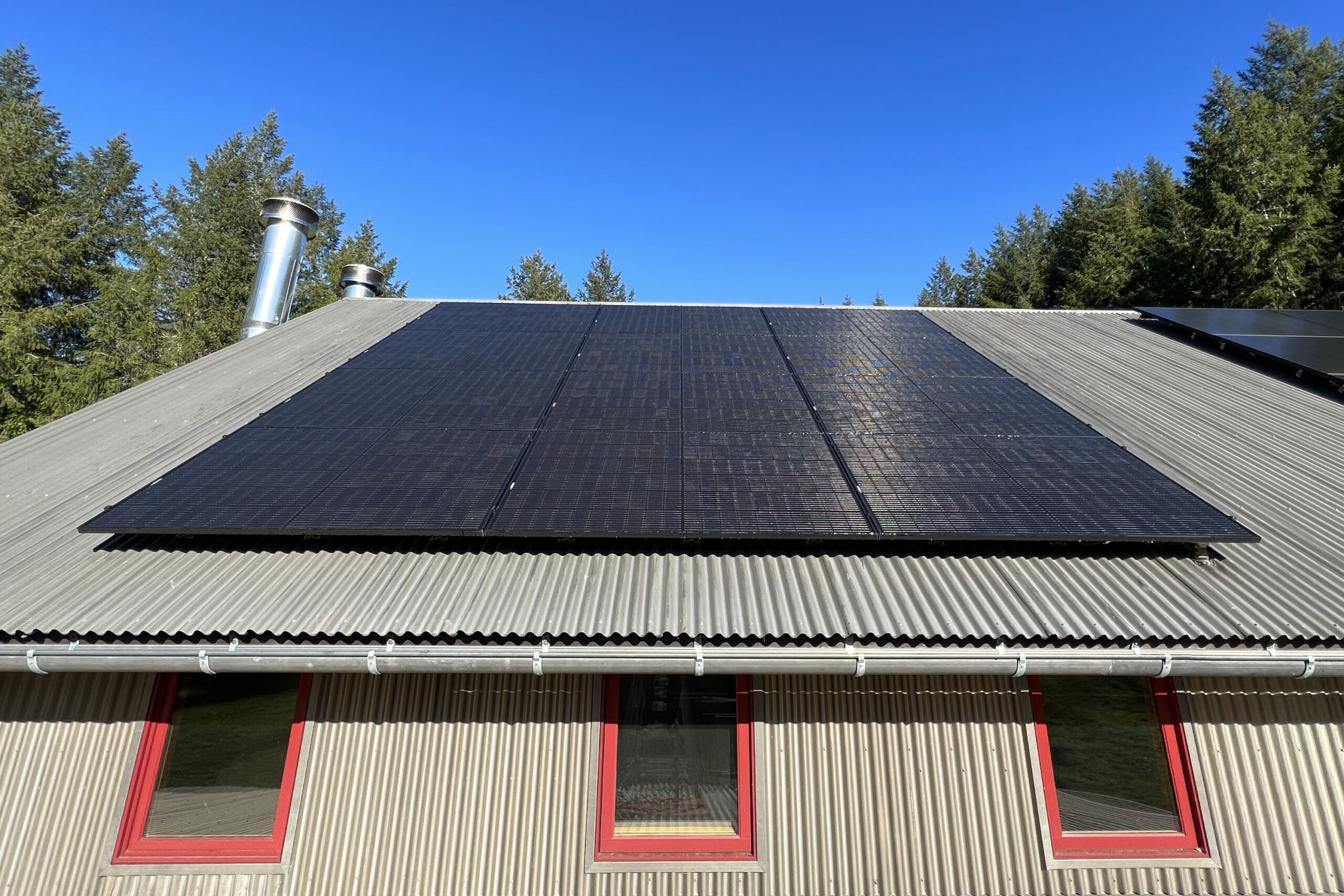
Outages happen.
Be prepared.
Energy storage systems can be worth their weight in gold during a power outage at a residential or small-commercial property.
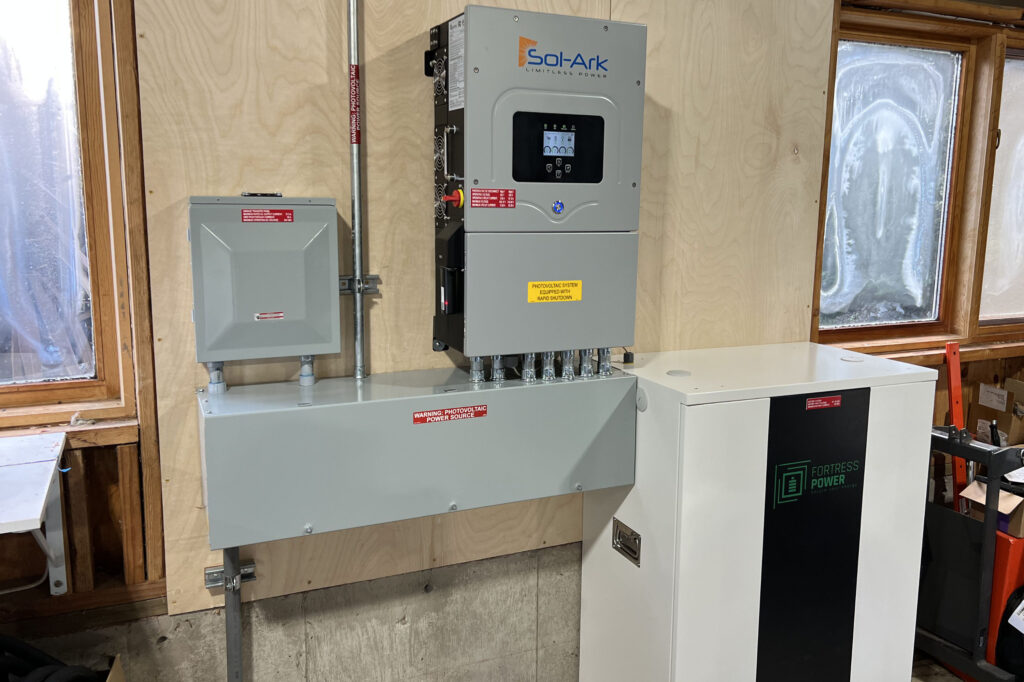
Why have a backup?
Battery storage systems can keep power flowing so that essential electrical items such as a well pump or a food freezer can keep running, even if there is a power outage.
We design & install your system
We have designed and installed many energy and battery backup systems in conjunction with grid-tied solar systems. During times of low power-use, the solar panels charge the batteries. When there is a power outage, the backup system switches on instantly.
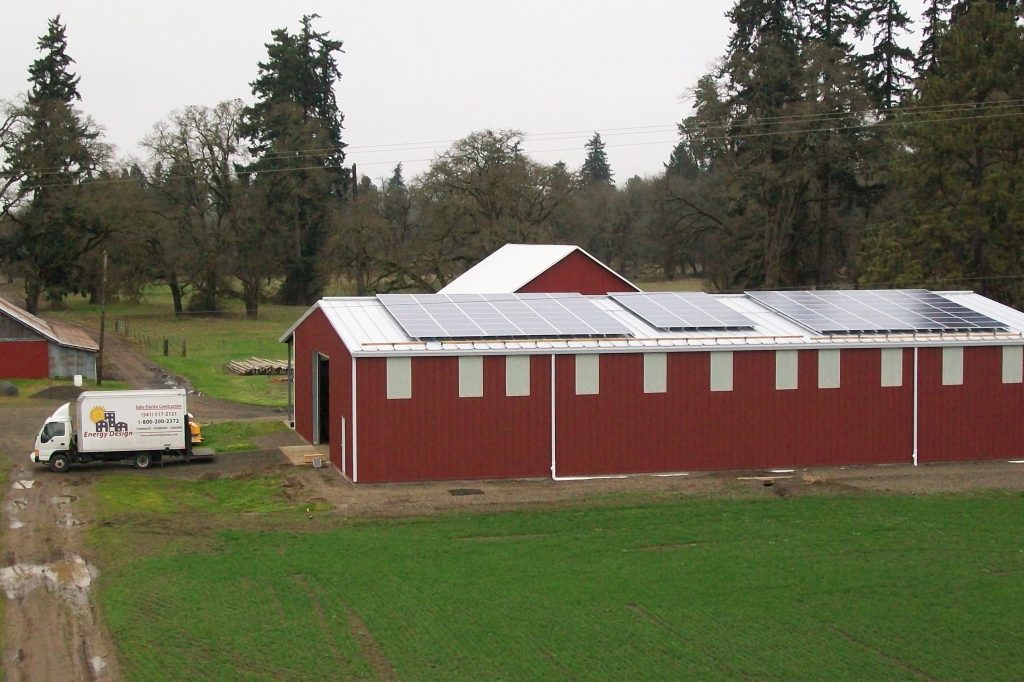
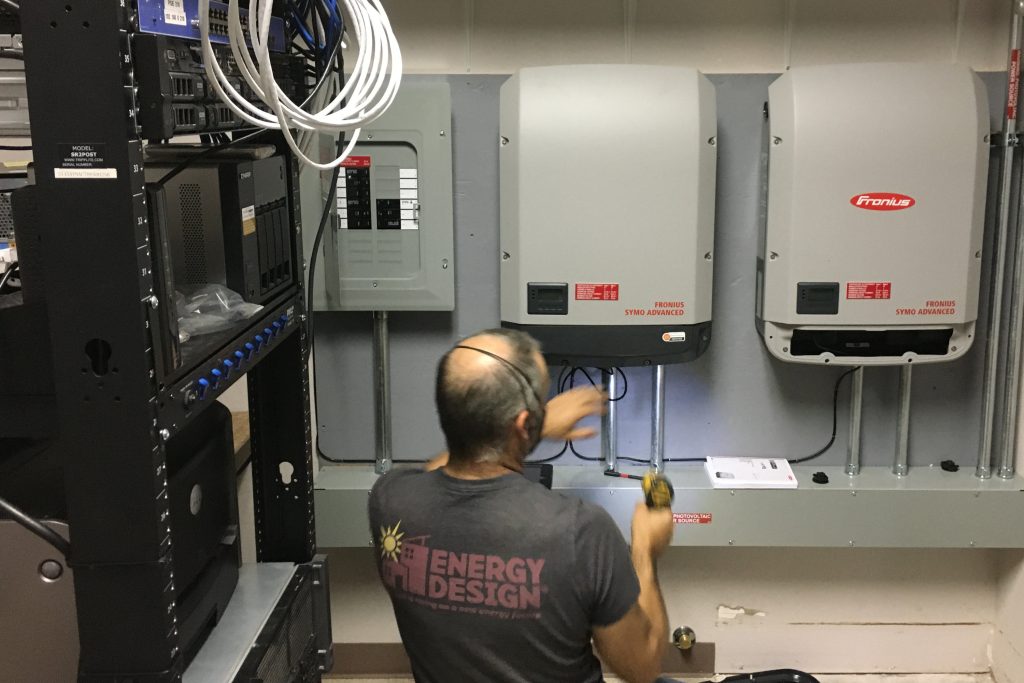
Being prepared
Many of our customers, especially those in rural areas, want to be prepared in case of an emergency loss of power from the grid — for example during a “red flag” event when wildfire is a threat and utilities are forced to shut off power.
The facts about Energy Storage Systems
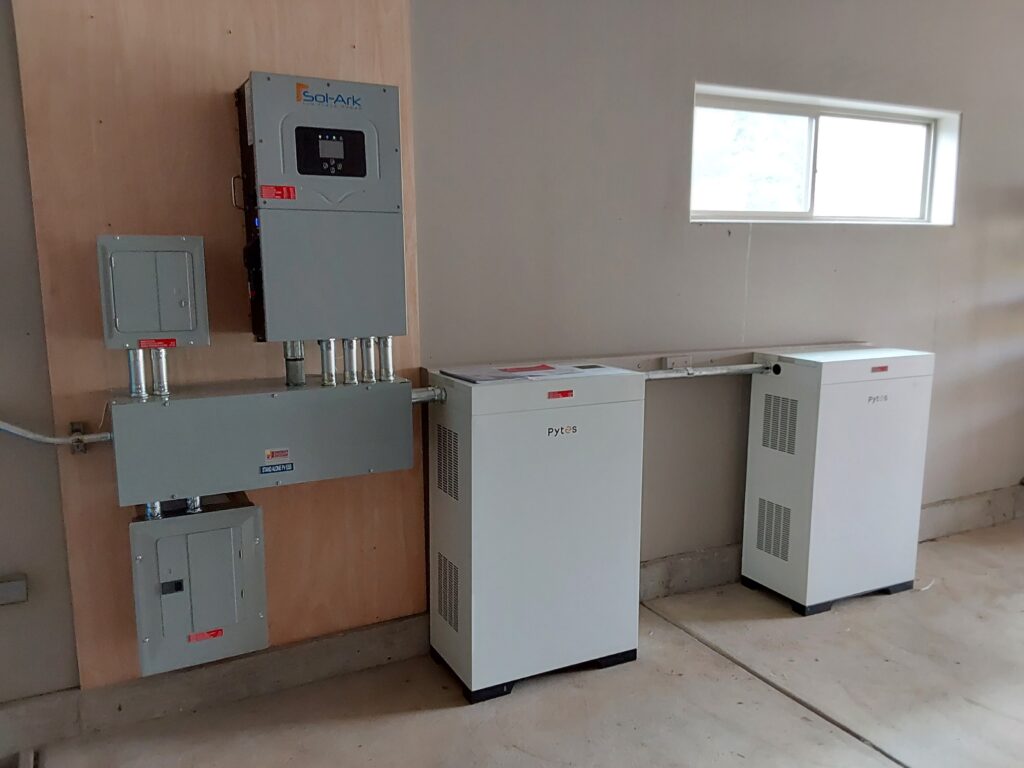
What are the limitations of an Energy Storage System?
Marketing across the internet would have you believe that, if you purchase an energy storage system (ESS) (battery based system) for your home, you can power your entire house, no matter the circumstance, for an indefinite amount of time. This is untrue. Many factors play into the instantaneous available power and duration an ESS can power loads at a site during an outage.
Our team designs and builds both standard grid tied solar electric system and ESS systems. An ESS is typically grid tied and net metered, just like a standard solar electric system. The ESS additionally functions by accumulating the solar energy that isn’t used by your home or sold back to the utility on a given day, into a collection of batteries, typically lithium iron phosphate. You can consider this ‘potential’ energy stored to be used later when needed. We primarily utilize Sol-Ark hybrid inverter chargers to do the work here. They provide the ‘brains’ for a system, allowing complex programming and a myriad of user-defined options depending on utility rules, owner preferences, and expected weather patterns (aka backup mode).
Batteries have limits based on chemistry, charge capacity and lifespan. The Sol-Ark inverter utilizes complex algorithms to find the best charging parameters based on the inputs available and the state of the batteries incorporated into an ESS.
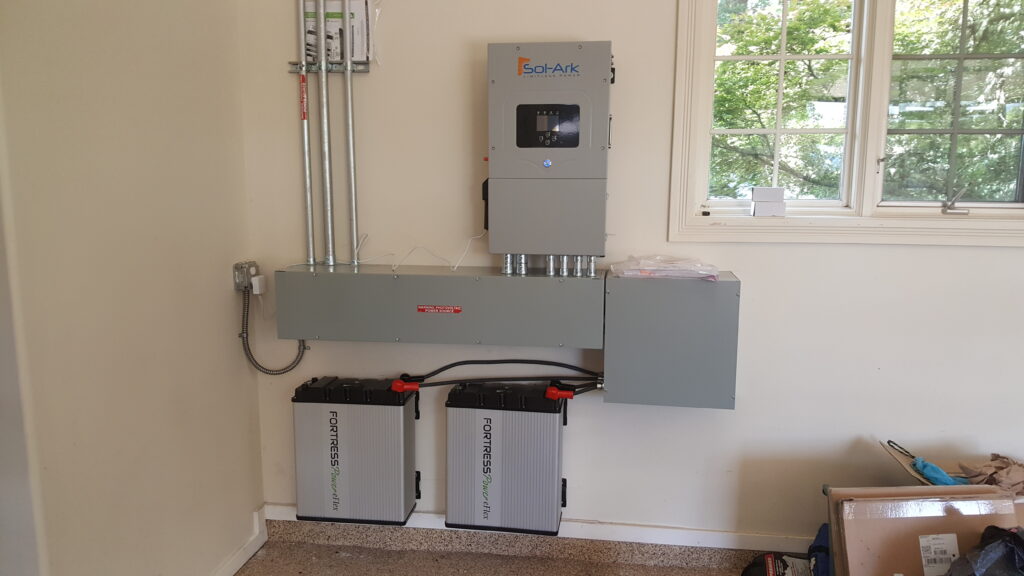
Solar electric systems tend to produce the majority of their power annually between May and September. Our winters here in the Pacific Northwest consist of mostly gray skies and rain. The suns path, being lower on the horizon, inherently produces less power between October and April. The typical solar electric system output is measured in the hundreds of Watts in the winter, as compared to thousands of Watts in the summer. It just so happens that it is also winter time when we can expect extreme weather that leads to power outages. Winter is also when all-electric homes tend to have the highest electrical demand due to the need for heating. These outages are the primary reason clients call our team to inquire about ESS technology.
The systems we build do not provide enough power to run HVAC systems or water heaters for any meaningful length of time. Typically, our electrical contracting partner will install a 125 Amp load center and migrate your most needed breakers from your existing electrical panel to this new backup loads panel. During an outage, the backup loads panel is automatically powered instantaneously via the Sol-Ark inverter and the interconnected battery system.
What can you expect to get out of an ESS during a winter power outage?
Let’s imagine there’s an outage. Your energy storage system has a limited supply of power stored. The better you manage your consumption, the longer your system will last before needing a charge. Typical ESS utilize lithium iron phosphate batteries with a capacity of 10-30 kWh. This is usually interconnected to an “Essential” load electrical panel (100-125A). Like the name implies, the battery will only power what would be essential if you had limited access to energy. Think well pump, kitchen receptacles, freezer, fridge, internet router and basic lighting.
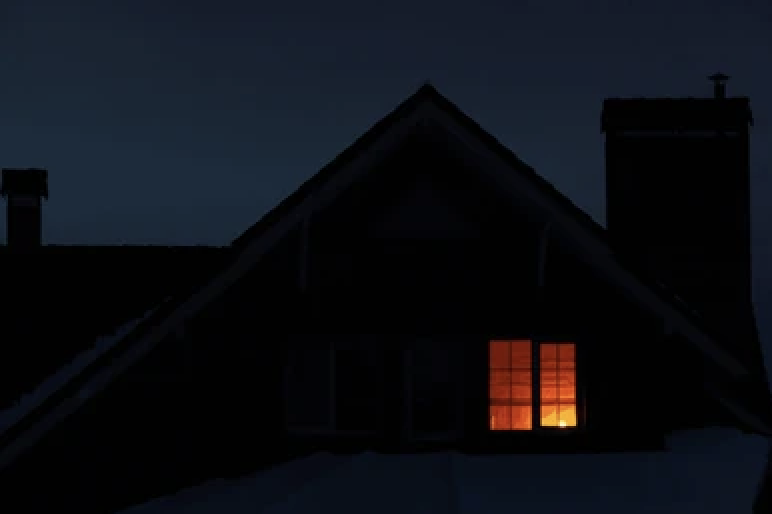
Use energy in one room at a time to conserve battery power during an outage.

The appliances and accessories you could expect to power with a battery backup system.
Here’s the basic math to keep in mind: When you run a 1000 watt appliance for an hour you use one unit (kilowatt hour) of electricity. One unit of electricity will run a 2000 watt heater for 30 minutes or a 100 watt lightbulb for 10 hours. You can develop an ESS management plan by looking at the Energy Rating Label on the appliances you have interconnected on the essential loads panel and figuring out how much time these appliances actually run.
It should be mentioned here that an ESS cannot power your electric heating system typically. Homes in the PNW typically use 11,000 kWh/yr or 30 kWh in a day. During a winter storm, this can easily jump to 100 kWh in a day when a heat pump or electric furnace is in use and running on ‘overdrive’ to keep up with frigid temps. The smaller (10-36 typically) kWh storage capacity of an ESS gives you a backup option, but only to essential loads. If the sun comes out and the solar modules are free of snow and debris, you’ll be able to replenish some of this stored energy, but rarely at the rate of consumption during the winter. Summertime outages (such as red flag events) tend to provide power for much longer duration than the winter time.
What can I do to make an ESS last longer during a winter outage?
Energy Design has various code compliant and user friendly techniques to have an ESS and solar installations that allow for generators to be used on site during extended outages.
We highly recommend investing in a quality 120/240 Volt standby or portable propane (not gasoline or diesel) generator. It may not sound environmentally friendly (resiliency seldom is), or may even sound like a roundabout method, but it’s the most effective backup energy tool for a short term emergency in the winter given the sun limitations. We recommend 8000-12000 Watt propane generators on site and at least 40 gallons of stored fuel. We do not recommend gasoline generators, as the maintenance of the fuel can be difficult, whereas propane can be stored for up to 8 years. We always recommend a 50 Amp (not 30 Amp) inlet receptacle for the portable generators.
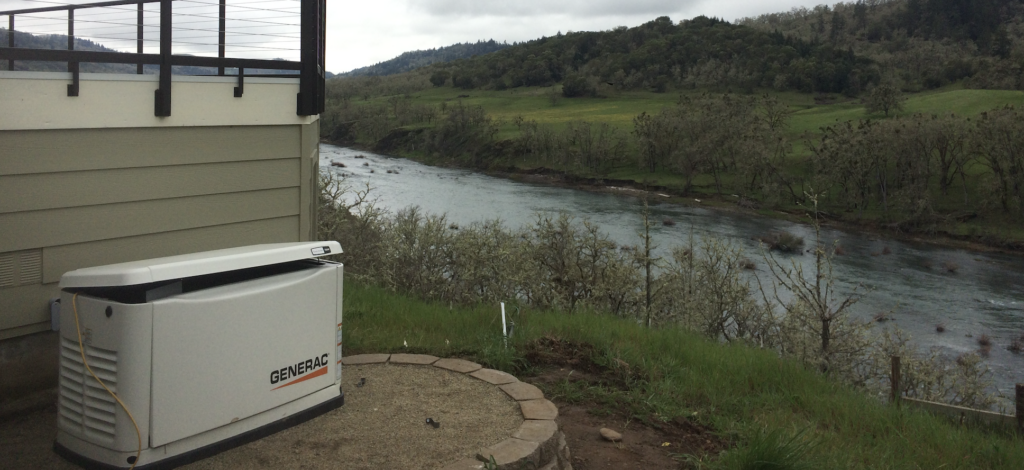
Energy Design has found innovative ways of working with a standard electrical contractor to integrate a generator’s power directly into the Sol-Ark inverter/charger system to charge batteries and feed interconnected essential loads. The generator would either manually or automatically get turned on when the batteries reach a certain threshold. Clients could shut off the generators at night to sleep, while still having power available to their essential loads. An integrated generator circuit will actually help you get the most use out of your ESS investment during winter outages.
It’s important to note that we typically use Sol-Ark instead of Tesla Powerwalls due to their higher efficiency and the ability to directly couple with generators. To repeat, Tesla Powerwalls (and nearly every other battery based inverter system) do not allow you to recharge the batteries via a generator, only solar. Our systems are more robust but they do involve more user interface.
We recommend checking your battery systems programming often (especially before big seasonal temperature changes). Just like with home computers and internet equipment, software upgrades are required from time to time. Making sure your ESS is running the newest operating system helps ensure a quality experience during a weather event.

It’s useful to check for software updates for your battery and inverter system before big seasonal weather changes happen.
Although we would love to sell you a well built ESS, we must say that it’s always less complicated and cheaper to have a small generator on hand to power your needs, and have a standard solar on site to be just grid tied, helping offset your carbon footprint and annual power consumption.
If you have questions about the safe integration of a generator without ESS, we recommend learning about generator interlock kits or contacting a local electrical contractor to discuss automatic generator options.
Questions to ask yourself: what is my situation when the power goes out? How much energy do I really need in order to make it for a couple days? All of the standard solar electric systems we build are capable of AC coupling with a future ESS, should the cost, capacity and complexity of such systems fare better in the near future. We like to call it ‘future proofing’.
Wait, what about heating?
We do not recommend installing 240 V electric heating systems in the essential loads panel. Sometimes it is possible to run controls and fans for NG (methane) furnaces and other low consumption HVAC equipment. We must evaluate these options on a case-by-case basis. Often, an electric heating source will too-quickly drain your battery system.
Though a bit taboo these days, we highly recommend installing an efficient wood stove or pellet stove as a backup heat source, especially for our rural clients. You can look into EPA efficient wood stoves, or other non-electric stoves that don’t produce as many emissions of fine particles (they pollute the air).
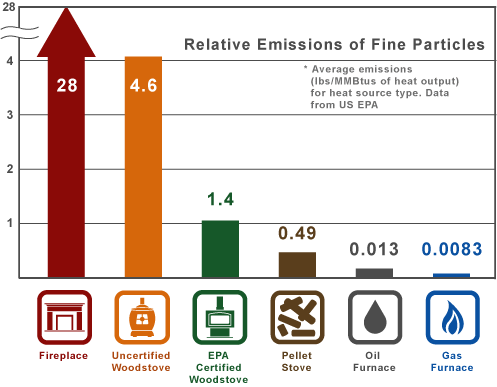
Preparing for and managing your household’s experience of an approaching winter storm is ¾’s of the battle.
See our “How to be prepared for a winter storm warning” listed below.
If you’re serious about an Energy Storage System, consider these factors:
- Batteries have limited capabilities. It’s important to understand that an ESS can only support smaller loads, or large loads for shorter duration. An ESS will not power my whole house. Why? Physics, cost, electrical safety considerations, and available sunlight.
- Batteries and solar don’t work as well in the winter as they do in the summer. Limited sunlight provides less opportunities to fully recharge.
- When using a battery system in the winter you’ll need to practice extremely frugal power usage. It won’t be possible to run everything in your house at once. The system will only be able to power the breakers placed in the essential loads panel.
- Battery systems can be costly when compared to their energy storage capabilities. Energy Storage systems are radically more complex than standard grid tied solar electric systems. They typically ranging between $60k-$120k (before rebates and tax credits) depending on the amount of AC electrical work that would be needed and the number of lithium iron phosphate batteries in the system.
- If you have an ESS installed, we still recommend a backup generator. Why? It’s the most effective backup charging source during the winter (because of the limited sunlight, and potential for solar panels to get covered with snow/ice).
- We recommend installing a small UPS (uninterrupted power supply) for your internet router. During an outage, many ESS operate best with a constant connection to the internet during an outage. This also allows you to track the behavior of the system whether on or off site.
- Installation time and complexity: Typical solar projects take 2-3 days, while an energy storage system installation can take up to 10 days due to the complexity of AC and DC electrical work and programming.
- You’ll need to test your system annually. We recommend simulating an outage every year, ideally before big seasonal temperature changes, in order to observe the software and hardware working properly. This also helps exercise your muscle memory to be prepared for an outage.
- Temperature matters. If a battery system gets too cold, then it won’t function properly. Lithium batteries must be above freezing (32°F/0°C) to charge correctly. Our team will employ various methods to provide a 48V heat source at the battery cabinet. During an outage, this will help keep the batteries at operating temperature, allowing them to work when you need them most. Please note that for Sol-Ark and Sonnen users, we don’t have access to the temperature data on the installer/user end.
- Lithium Iron Phosphate batteries have a warranted lifespan of ten years, and sometimes a fickle warranty. It may be important to factor in if that lifespan is worth the cost and to have a clear picture of what the warranty will and will not cover.
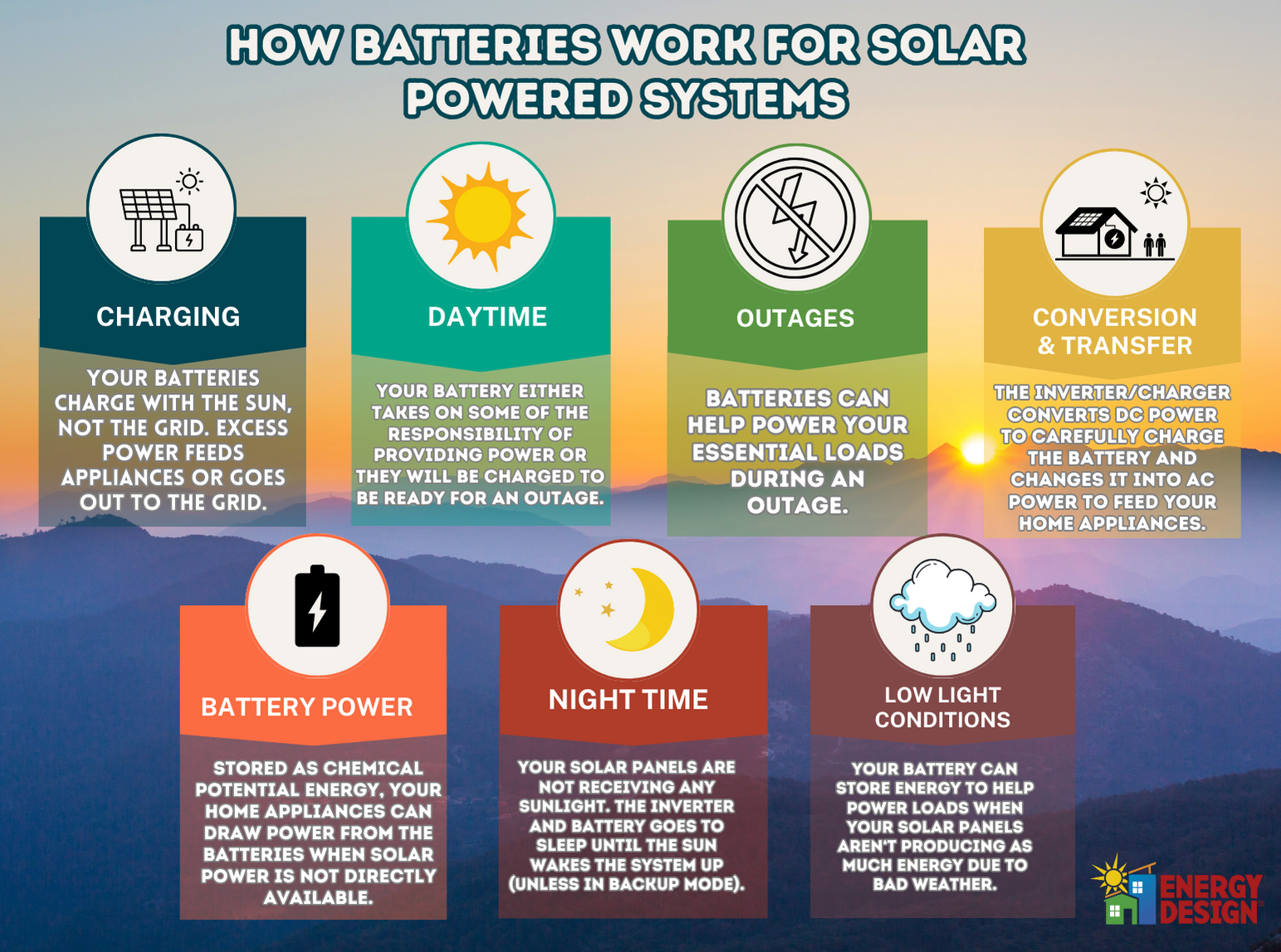
How to be prepared for a winter storm warning
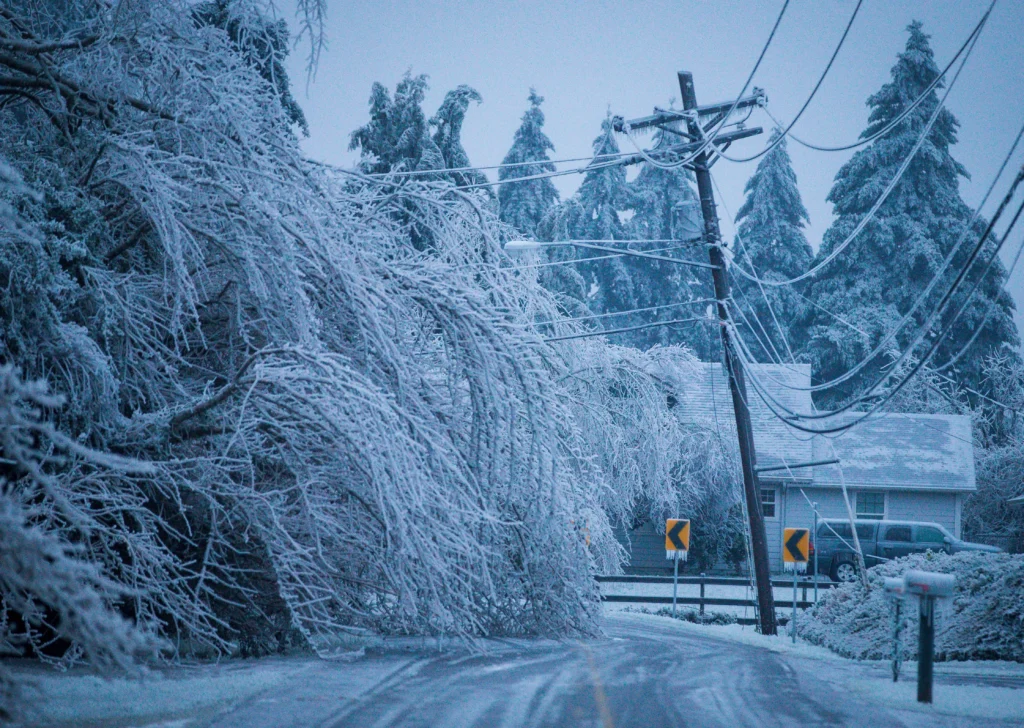
- Make sure you test run your system prior to an expected outage by turning off the main breaker to your home electrical panel. Does the ESS perform as expected? Run through your priority breakers and make sure non-essential loads remain off. Label loads well in the backup electrical panel!
- Managing your electrical loads before and during an outage is crucial. The more miserly you are, the longer your system will last and the more fuel you will conserve.
- Keep your battery above the minimum cold temperature. Lithium Ion batteries turn off if they get too cold. Check your Owner’s Manual to see what the minimum operable temperature is.
- Test run your generator prior to a long run. Do you have oil on hand?
- We recommend at least 40 gallons of stored fuel if possible. Propane stores for longer than gasoline, so purchase a quantity suitable for your needs and based on your generator type.
- Have tools prepared to clear snow/ice from your driveway, and off of the panels.
- Get flashlights, charge phone batteries, and have candles and lighters ready.
- The ‘have a backup to your backup’ approach is recommended.
- Stock up on necessities
- Medications, extra food, water
The Various Energy Storage System Options
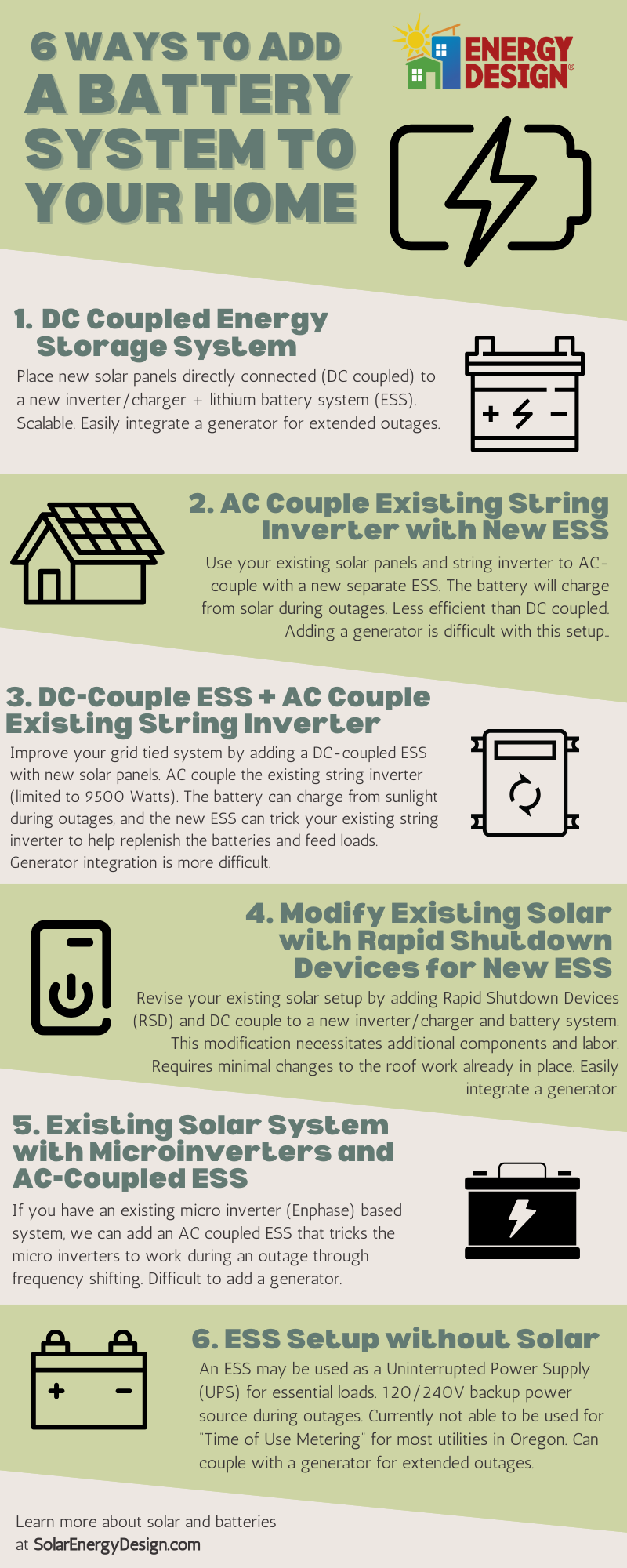
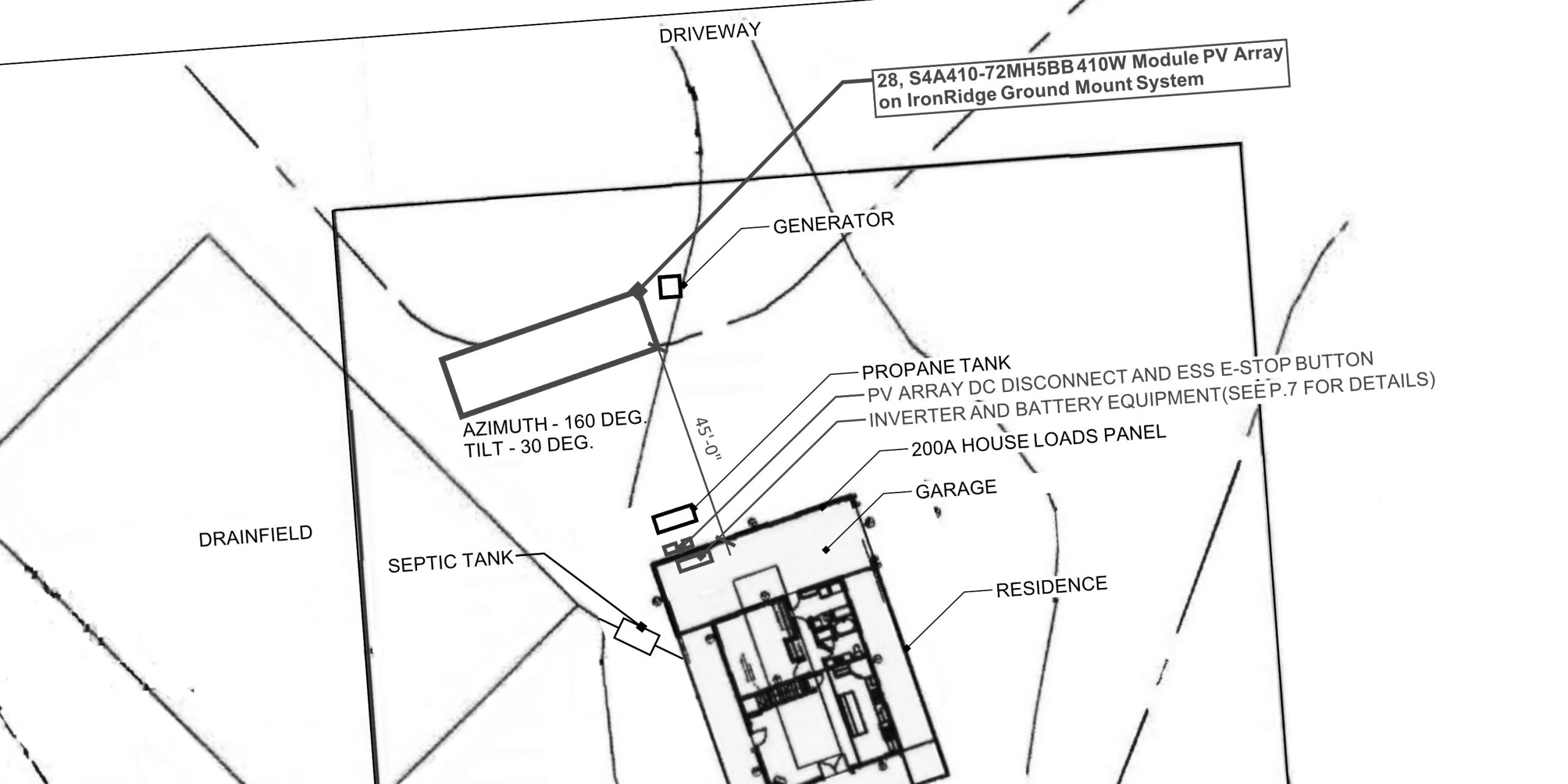
We have done solar panels on two houses and a barn, and now I have a battery backup in the barn. I couldn’t be more proud to have your equipment in my barn or have Energy Design a part of this farm. Your crew did an outstanding job!
— Holly